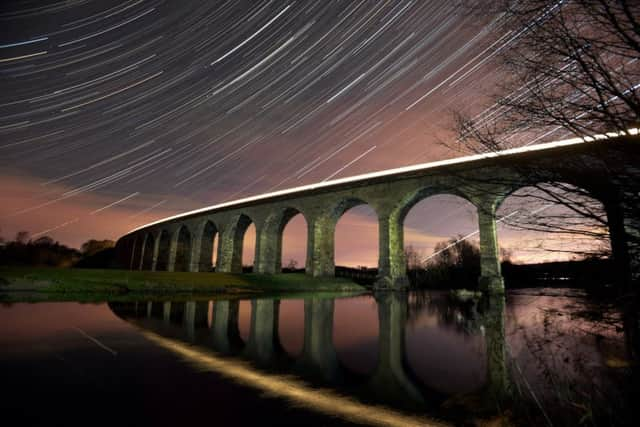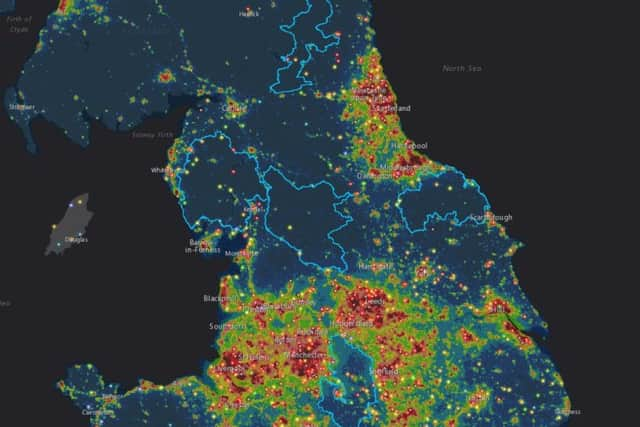The two ‘black holes’ in Yorkshire’s night skly
The oceans of emptiness represented by the National Parks of the Yorkshire Dales and North York Moors are among the last places left in which, on a winter’s night, outdoor types can look up and still see the heavens.
Across the rest of the region, and for more than half the population of England, light pollution has almost obliterated the stars, a cosmic census of the night sky has found.
Advertisement
Hide AdAdvertisement
Hide AdOnly two per cent of participants in a nationwide survey conducted in February were able to count more than 30 stars in what are termed “truly dark skies”, while some 57 per cent struggled to see more than 10, according to the research by the Campaign to Protect Rural England.


The findings come as a long-term strategy produced by the North York Moors National Park proposes protection against light pollution and for defined “remote areas” more than 1km from the nearest main road.
People in urban and rural parts had been encouraged to count the number of stars they could see with the naked eye within the constellation of Orion, which is only visible in the winter months.
The results show light pollution in not only the most densely populated areas of West and South Yorkshire, but also, to a lesser extent, in the rural A1 corridor between the Dales and North York Moors.
Advertisement
Hide AdAdvertisement
Hide AdThe findings demonstrate that pollution affects “one of the countryside’s most magical sights – a dark, starry night sky”, campaigners said.


More could be done by Government, councils and the public to lessen the negative effects caused by artificial light from streets and buildings, the group added.
Emma Marrington, dark skies campaigner at the Campaign to Protect Rural England, said: “We’re hugely grateful to the many people who took the time to get out and take part in our star count.
“But it’s deeply disappointing that the vast majority were unable to experience the natural wonder of a truly dark sky, blanketed with stars.
Advertisement
Hide AdAdvertisement
Hide Ad“Without intervention, our night sky will continue to be lost under a veil of artificial light, to the detriment of our own health, and the health of the natural world.
“The Star Count results show just how far reaching the glow from street lights and buildings can be seen.
“Light doesn’t respect boundaries, and careless use can see it spread for miles from towns, cities, businesses and motorways, resulting in the loss of one of the countryside’s most magical sights - a dark, starry night sky.”
She suggested that better-designed lighting, street light dimming schemes and part-night lighting implemented in consultation with local communities and the police, could limit the damage caused by light pollution, reduce carbon emissions and save money.